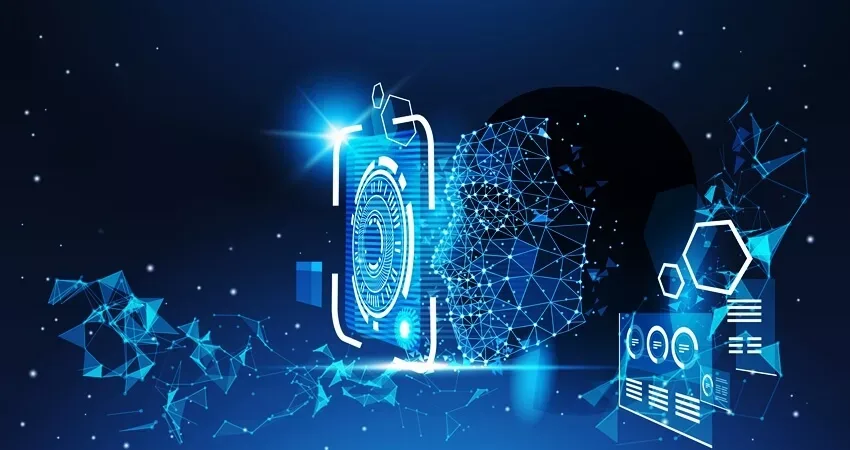Primary operations for Deep Learning for facial recognition to go through are – verification, capture, identification, and result.
Many biometric techniques are used for human identification purposes like a signature, fingerprint, speech, iris, face, and hand geometry recognition.
Out of these, face recognition technology is the most convenient and coherent technique of all. It is because of the fact that face recognition does not need any active co-operation of a person.
Although detecting and recognizing an extensive database of images is a challenging task, this biometric software application serves as a reliable and robust security system.
It is employed in various domains like driving license system, ATMs, passport authentication, railway reservation, mobile platforms, and other surveillance & monitoring operations.
Deep Learning(DL) for Face Recognition
In reality, face recognition has been in development since the 1960s.
But only because of modern digital technology developments and methods like artificial intelligence, Internet of Things, Artificial Intelligence facial recognition is now a highly developing technology.
Furthermore, several factors such as the rise of public security concerns and the need for more reliable identity verification methods have contributed to the increasing interest in face recognition.
Pattern recognition, face analysis, machine learning, and deep learning are the main contributors to the development of facial recognition systems.
A subset of ML (machine learning), DL uses ML algorithms and lots of data to educate deep neural networks for enhanced accuracy. Deep learning learns through an ANN (Artificial Neural Network) and thus considered as more human-like.
Deep Learning Algorithms for Face Recognition Software
Also known as the Biometric Artificial Intelligence, face recognition detects and verifies an individual, digitally within a database. Deep learning becomes more and more accurate with the accumulation of the database.
You can say that it works like a human brain and count the data as its experience within the field but with optimal accuracy and efficiency.
So, once the deep learning algorithm gains experience using the accumulated past and new large datasets, any technology employing DL benefits can make reliable predictions and also present factual responses to real-time data.
The data faceprint stored via facial traits is compared by the face recognition software using DL algorithms.
It builds an analogy between the real-time data capture (digital image) and the stored database to identify an individual.
There are four main courses subjected to deep learning for facial recognition – detection of facial features, alignment, mathematical structure embedding, and face classification and recognition.
Main Deep Learning Systems Used for Face Recognition
Currently, these are the four recognized DL systems that work together with facial recognition
- DeepFace
- DeepID series of systems
- VGGFace
- FaceNet
DeepFace-
Based on Deep convolutional neural networks, DeepFace is a deep learning face recognition system. Created by Facebook, it detects and determines the identity of an individual’s face through digital images, reportedly with an accuracy of 97.35%.
DeepID-
First coined by Yi Sun in his paper Deep Learning Face Representation from predicting 10,000 classes, deep hidden identity for generic object detection, counted among the first models of DL for facial recognition. DeepID achieved more accuracy than humans on a project.
VGGFace-
By Omkar Parkhi, Andrea Vedaldi and Andrew Zisserman of VGG (Visual Geometry Group) at Oxford in their paper “Deep Face Recognition.”
The paper contributed to understanding the development of a very large data set necessary to train modern CNN based face recognition systems. The data set acquired is then used as the basis for deep CNNs development for facial recognition tasks.
FaceNet- Achieving the state-of-the-art results on standard data sets, FaceNet uses a triplet loss function to learn score vectors for better results in feature extraction and, thus, identity verification.
Facebook on Deep Learning for Facial Emotion Recognition
Many new deep learning models for facial recognition are being proposed. It is clear that the practice of deep learning, particularly Deep CNN (Convolutional Neural Networks), has increased in the field of facial recognition.
After the face detection and recognition comes Facial Emotion Recognition (FER). Expression detection through Face Emotion Recognition systems is based on face geometry, mien, and aspects.
Facebook also acquired an emotion detection startup in 2016 called FacioMetrics.
They are employing FacioMetrics to work on enhancing Snapchat, too, in regards to features like selfies and augmented reality face masks.
They develop facial analysis software for mobile applications to append services like gesture-based controls, recognize facial expressions, and perform related actions, such as; giving a like/thumbs up with every gesture of smile.
While traditional algorithms for facial recognition are linear, deep learning methods use a multi-tiered course in a hierarchy of processing units for feature extraction, transformation, and recognition.
With every experience and learning, the algorithm starts working on creating a statistical input until the resultant reaches an acceptable level of accuracy.
You May Also Like To Read-
MXNet vs PyTorch: Comparison of the Deep Learning Frameworks

